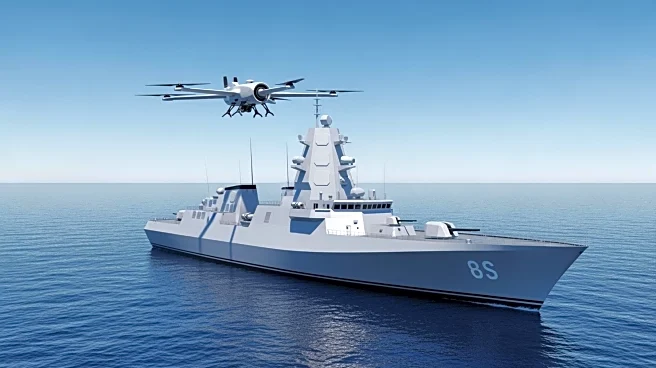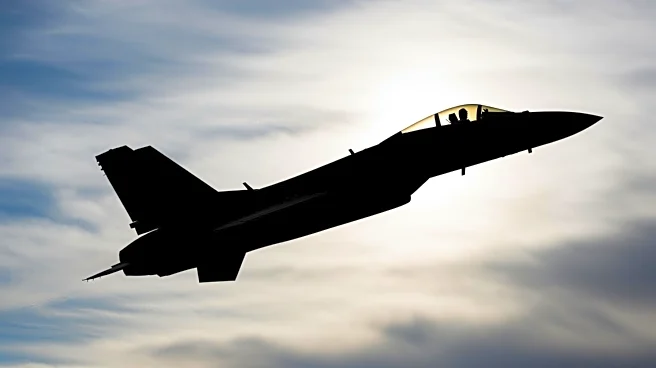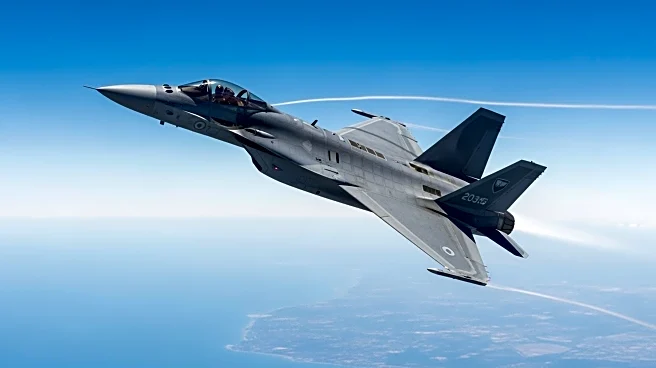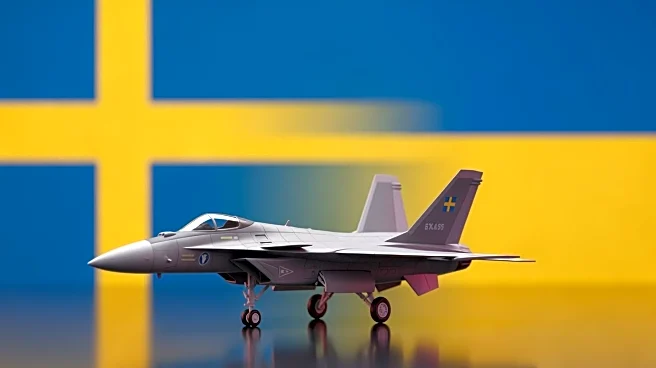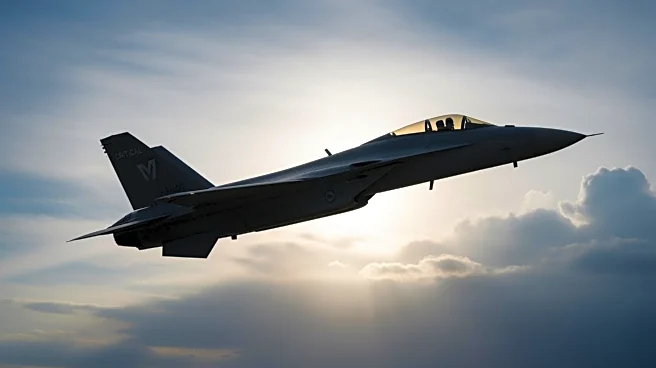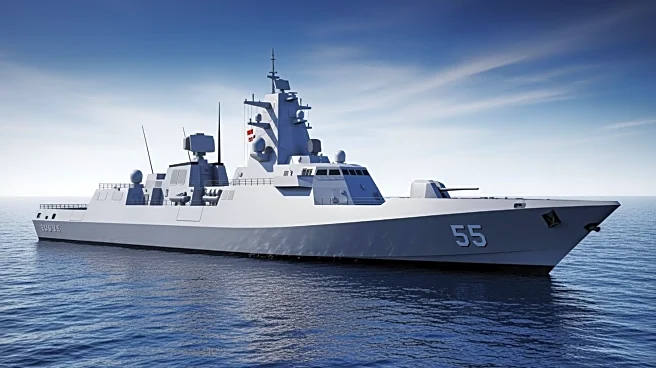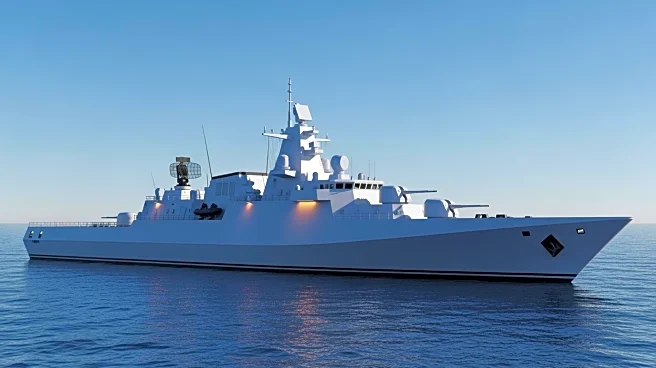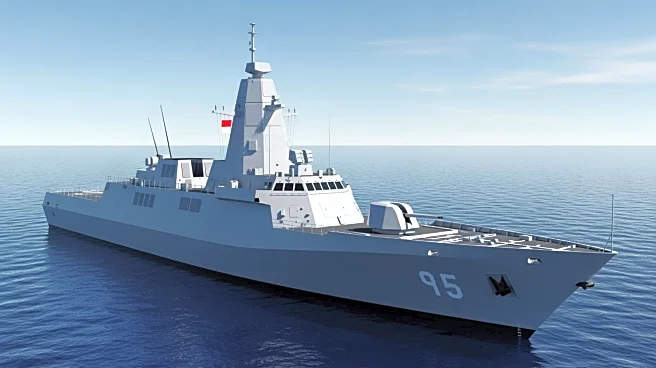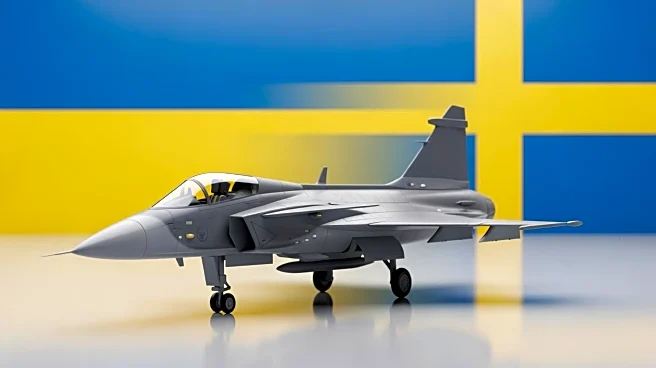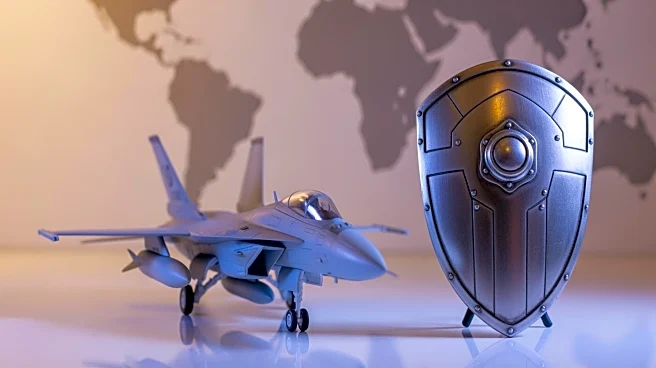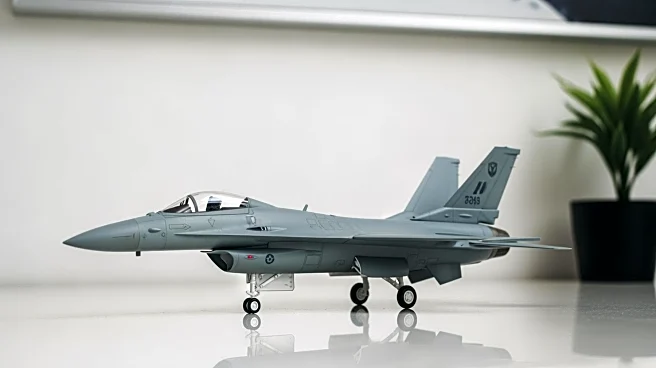What's Happening?
Singapore has launched a new class of warship, the Multi-Role Combat Vessel (MRCV), which integrates advanced technology and unmanned systems. The first of six vessels, named Victory, was launched at ST Engineering’s Benoi shipyard. This 8,000-ton warship is designed
to operate with drones and unmanned systems, allowing it to perform missions that traditionally require multiple manned ships. The MRCV features a range of advanced armaments and technology, including a high-voltage electrical distribution system and a reduced crew requirement. The ship is set to replace the older Victory-class missile corvettes by 2028.
Why It's Important?
The introduction of the MRCV represents a significant advancement in naval capabilities, emphasizing the integration of artificial intelligence and unmanned systems. This development is crucial for Singapore, given its strategic location along the Singapore Strait, a major maritime chokepoint. The new warship enhances Singapore's ability to secure its sea lines of communication and respond to various threats. The reduced crew requirement and advanced technology reflect broader trends in military innovation, potentially influencing naval strategies globally.
What's Next?
The MRCVs are expected to be fully operational by 2028, with ongoing outfitting and sea trials. As these vessels become active, they will likely influence regional naval dynamics, particularly in Southeast Asia. Singapore's focus on evolving operational requirements suggests continued investment in advanced military technologies. The collaboration with companies like Saab indicates potential for further international partnerships in defense technology.
Beyond the Headlines
The MRCV's design, incorporating carbon fiber composites, highlights a shift towards lighter, stealthier, and more efficient naval vessels. This innovation may set a precedent for future shipbuilding practices, emphasizing sustainability and operational flexibility. The strategic importance of the Singapore Strait underscores the geopolitical implications of such advancements, potentially affecting regional security and trade routes.
